Detecting and monitoring of water inrush in tunnels and coal mines using direct current resistivity method:A review
Shucai Li,Bin Liu,Lichao Nie,Zhengyu Liu,Mingzhen Tian,Shirui Wang,Maoxin Su, Qian Guo
Geotechnical and Structural Engineering Research Center,Shandong University,Jinan,250061,China
Detecting and monitoring of water inrush in tunnels and coal mines using direct current resistivity method:A review
Shucai Li*,Bin Liu,Lichao Nie,Zhengyu Liu,Mingzhen Tian,Shirui Wang,Maoxin Su, Qian Guo
Geotechnical and Structural Engineering Research Center,Shandong University,Jinan,250061,China
A R T I C L E I N F O
Article history:
Received 26 August 2014
Received in revised form
1 June 2015
Accepted 2 June 2015
Available online 10 July 2015
Direct current(DC)resistivity method Technical status
Latest progress
Underground engineering
Water inrush
Routine detection
Advanced detection
Real-time monitoring
Detecting,real-time monitoring and early warning of underground water-bearing structures are critically important issues in prevention and mitigation of water inrush hazards in underground engineering. Direct current(DC)resistivity method is a widely used method for routine detection,advanced detection and real-time monitoring of water-bearing structures,due to its high sensitivity to groundwater.In this study,the DC resistivity method applied to underground engineering is reviewed and discussed, including the observation mode,multiple inversions,and real-time monitoring.It is shown that a priori information constrained inversion is desirable to reduce the non-uniqueness of inversion,with which the accuracy of detection can be signifcantly improved.The focused resistivity method is prospective for advanced detection;with this method,the fanking interference can be reduced and the detection distance is increased subsequently.The time-lapse resistivity inversion method is suitable for the regions with continuous conductivity changes,and it can be used to monitor water inrush in those regions.Based on above-mentioned features of various methods in terms of benefts and limitations,we propose a three-dimensional(3D)induced polarization method characterized with multi-electrode array,and introduce it into tunnels and mines combining with real-time monitoring with time-lapse inversion and cross-hole resistivity method.At last,the prospective applications of DC resistivity method are discussed as follows:(1)available advanced detection technology and instrument in tunnel excavated by tunnel boring machine(TBM),(2)high-resolution detection method in holes,(3)four-dimensional(4D) monitoring technology for water inrush sources,and(4)estimation of water volume in water-bearing structures.
©2015 Institute of Rock and Soil Mechanics,Chinese Academy of Sciences.Production and hosting by Elsevier B.V.All rights reserved.
1.Introduction
A large number of infrastructures including railways,water conservancy and hydropower projects are being constructed in karst areas in Western China.Deep tunnels are also increasingly used for those projects,and the depth of some coal mines reaches up to 1000 m.However,the geological conditions in these areas are quite complex,thus it is very diffcult to fully understand the geological setting of the project area during the stage of engineering survey.Meanwhile,adverse geological conditions are sometimes diffcult to be investigated,including fault,karst cave, fractured rock mass,etc.,which have the potential to induce geological hazards unexpectedly.Water inrush is one of the most serious geological hazards in underground engineering,causing equipment damage,project delay,and even casualties.Therefore, construction safety of underground engineering is a challenging issue in association with geological hazards(Li et al.,2007,2008, 2014;Qian,2012).
To the authors’knowledge,the main sources of water and mud inrush in underground construction are the adverse geological bodies flled with groundwater,which include faults,karst caves, coal mine collapse column and goaf.In order to effectively control or avoid water inrush,the adverse geological body should be precisely determined prior to construction and its evolution process must be real-time monitored for the early warning purpose.The existence and migration of groundwater are the main factors controlling the conductivity of subsurface media(except conductive rocks).For the direct current(DC)resistivity method is sensitive to groundwater,it is widely used in underground engineering,such as mines and tunnels,with advantage of easy interpretation.The DC resistivity method is basically used in the following three aspects: (1)routine detection of water-bearing structures in differentlocations;(2)advanced detection of water-bearing structures ahead of working face;and(3)real-time monitoring of evolution process of water inrush in order to obtain groundwater migration information for early warning purpose(see Fig.1).
However,the geo-environments of underground engineering are more complex than those of ground surface.Underground engineering is a whole space environment but characterized with a narrow observation space.In this circumstance,it is rather diffcult to lay out the survey lines as schemed due to the interference of a large number of metal structures.Consequently,it is diffcult to acquire effective and detailed information of water-bearing structures,which often results in positioning error,non-uniqueness of inversion,and false anomaly.To solve above problems,various studies have been carried out on DC resistivity detection in underground engineering,such as effective observation mode,interference removal method,and inversion theory.In this paper,the DC resistivity method used in underground engineering is reviewed, and the main issues concerning technical problems and development trends are discussed.Also,recent work on DC resistivity method and water inrush monitoring by our research group is introduced.
2.Technical issues of DC resistivity method in tunnels and coal mines
DC resistivity method is one of the important geophysical methods,which is interpreted based on conductivity difference between rock and water.In recent years,this method is widely used for detection and real-time monitoring of water-bearing structures in tunnels and coal mines.
2.1.Routine detection
The safety of working face basically has close relation with adverse geological structures around the excavation,especially when these structures are flled with water.Due to the high sensitivity to water,the DC resistivity method can be used by laying out surveylines on thebottom or sidewall of tunnel,with which the resistivity information can be provided.However,underground resistivity detection is rather different from traditional ground detection because of the relatively narrow detection space,thus underground detection is easy to be interfered by metal components in tunnels and mines.In addition,as the depth of excavation increases,the geological conditions are more complex,which is usually encountered during resistivity detection in tunnels and coal mines.
The traditional groundresistivity methods are used todetect the water-bearing structures in mines,including electrical section method and high-density electrical method in a single tunnel (Maillol et al.,1999;van Schoor,2005;Martínez-López et al.,2013; Martínez-Pagán et al.,2013).These methods belong to electrical sounding method,with which two-dimensional(2D)vertical geoelectrical information is acquired in a single tunnel to identify the water-bearing structures.However,the non-uniqueness of inversion is a challenging issue for resistivity inversion under the conditions of serious interference.Meanwhile,the false anomalies are frequently reported in terms of resistivity inversion results.As a result,the water-bearing structure cannot be precisely identifed due to the complex electrical structure,as shown in Fig.2.
The computed tomography(CT)in medical science is considered to be a good method to solve the non-uniqueness of electrical sounding method.Electrical penetration modewith high resolution is used to acquire numerous observation data in different directions.Hence,electrical penetration detection method(Han and Shi,2000;Spitzer and Chouteau,2003;Eso and Oldenburg,2006; Li et al.,2010)and three-dimensional(3D)parallel electrical method(Liu et al.,2009a;Wu et al.,2009,2010;Zhang et al.,2009) using electrical penetration mode are frequently applied in tunnels and mines.In the electrical penetration detection method,the current and measuring electrodes are installed respectively in the working face of the two adjacent tunnels,as shown in Fig.3.In the 3D parallel electrical method,besides the two parallel roadways, there is an open-off cut that can be used todetect thewater-bearing structure,as shown in Fig.4.The parallel electrical method has the function of multi-point parallel measurement,with which the effciency and quality of data collection could be improved.
Two parallel roadways or open-off cut are used as detection space in the electrical penetration mode.Current is emitted by the current electrodes from a roadway or hole,and the measuring electrodes can receive potential difference in another roadway or hole.The detection angle is added in the electrical penetration mode to obtain multi-angle information,which increases positioning accuracy and resolution of detection result.The electrical penetration mode is the on-going research trend in accurate detection,in which the non-uniqueness of inversion is signifcantly reduced.
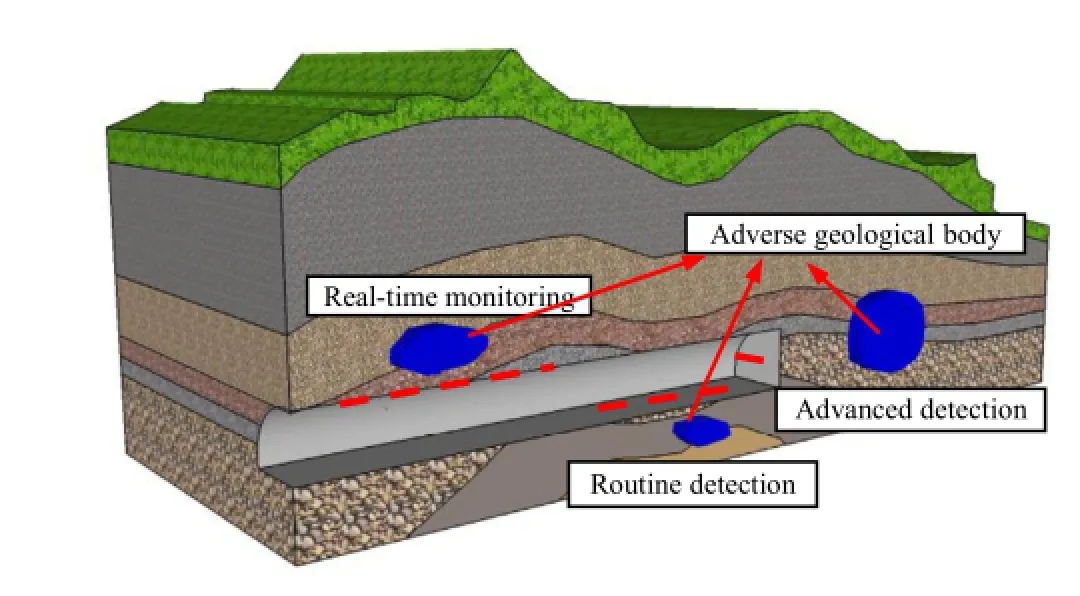
Fig.1.Schematic diagram of application of DC resistivity method.

Fig.2.Detection results of water-bearing structure.(a)Water-bearing structure over the roof.(b)Inversion result.
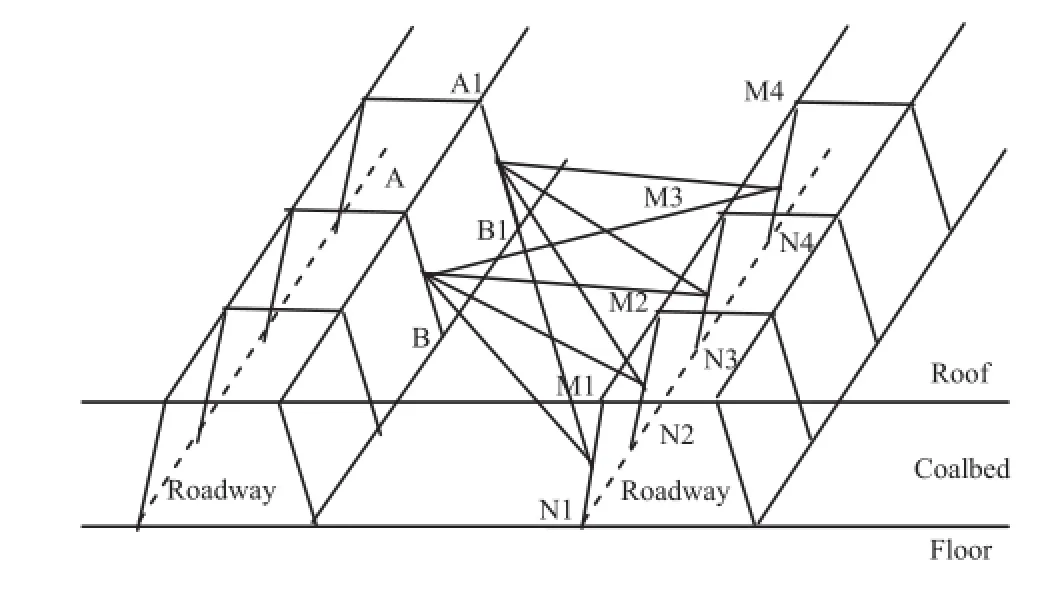
Fig.3.The electrical penetration method in mine(Li et al.,2010).A,A1,B,and B1 are the current electrodes;M1-M4 and N1-N4 are the measuring electrodes.
The achievements of DC resistivity method are obtained from mines,however,the non-uniqueness of inversion is the challenging issue for DC resistivity method,and the false anomalies caused by multiple solutions are more prominent.A priori information is used for resistivity inversion as a known constrain,which can greatly reduce the non-uniqueness of the DC resistivity method.A priori information constrained method is recently used in mineral mapping and aquifer characterization with a good result.This method contains known geological information,rock resistivity information revealed by drilling,and other relative information obtained from other detection methods(Jegen et al.,2009;Abedi et al.,2012; Bouchedda et al.,2012;Doetsch et al.,2012).The DC resistivity method based on constraint by a priori information is one of promising research directions in this feld.
2.2.Advanced detection
The advanced detection is used to detect the water-bearing structure ahead of the working face,which is signifcantly different from the ground detection and routine detection in tunnels and mines.According to the basic knowledge of electrical feld, the sensitive area of DC resistivity method is always under the survey line for the traditional ground detection and routine detection.However,the effective information ahead of the working face is the main concern for the advanced detection.If the electrical resistivity tomography(ERT)method available on the ground is directly used for advanced detection on the working face,the detection distance will be very short,less than half of survey line on the working face.
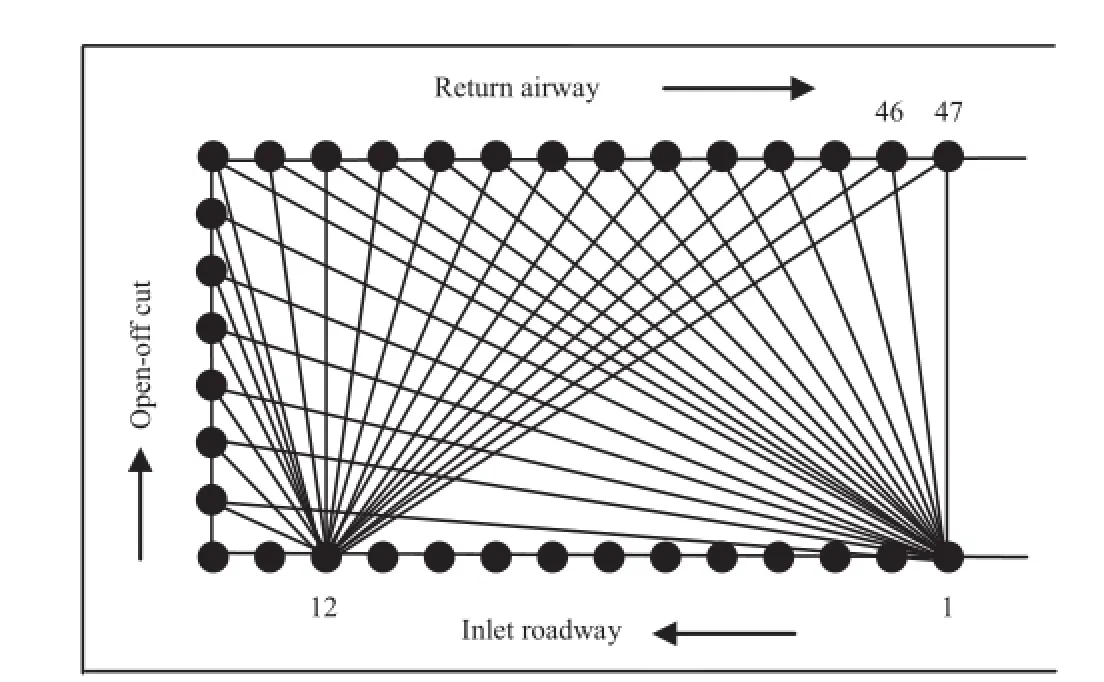
Fig.4.Distribution of electrodes in working face(Liu et al.,2009a).1,12,46,and 47 are the electrode numbers.
The observation mode of electrical sounding method(such as fxed-source three-electrode method,fxed-source two-electrode method)is adopted to address the above-mentioned issues,as shown in Fig.5.However,this observation mode is also more sensitive to the adverse geological body under the survey line than that ahead of working face.In simple geological conditions without fanking interference,the water-bearing structure ahead of working face can be refected by apparent resistivity curve,as shown in Fig.6b.Because the current line is attracted by the water-bearing structure ahead of working face,the apparent resistivity value decreases with distance and has a minimumvalue at distance of 16 m. It is the most important feature of the observation data,which can be used to identify the water-bearing structure ahead of working face.But in relative complex geological conditions with fanking interference,the effective information ahead of working face is interfered,as shown in Fig.6c.The effective information ahead of theworking face disappears,refected bya sudden drop of apparent resistivity curve.Several methods(such as ratio method and normalization)are used to reduce the above-mentioned interference,but the interference is still signifcantly strong in complex geological conditions(Huang et al.,2006,2007;Liu et al.,2009a, 2012a;Li et al.,2011;Qiang et al.,2011;Nie et al.,2012a,b).
The theory of oil well logging is considered to reduce the fanking interference,as shown in Fig.7.The shield electrodes A1 are installed in the vicinity of the electrode A0,and the current from electrode A0 fows into layer vertically.Thus the detection distance is improved,with the focusing effect of the shield electrodes A1.The observation mode was put forward by previous researchers on this basis,which can reduce the interference and thus is suitable for advanced detection.
BEAM(bore-tunneling electrical ahead monitoring),developed byGEOExplorationTechnologiesinGermany,usesabovementioned principles of focused electrode logging,as shown in Fig.8.The current of electrode A0 fows into the tunnel face,under the effect of the shield electrodes A1.The BEAM system can forecast the integrity of the rock mass and water supply system by measuring the variety of the apparent resistivity and percentage frequency effect(PFE).However,in actual feld application,users have found that the locations of water-bearing structures detected by BEAM system are not accurate.The geological body ahead of tunnel face is analyzed using the trend of normalized potential curve(Fig.9c)and by using modeling experiences but not the geophysical inversion method.Another problem of BEAM is that the actual detection distance is always less than 30 m.But,it should be noted the concept of focused resistivity method was frstly introduced into tunnel for advanced detection by BEAM,which provides a feasible way for resistivity detection technology(Zhu et al.,2007;Kaus and Boening,2008;Gao,2009;Mooney et al., 2013).For advanced detection using focused resistivity method intunnel,how to improve the detection distance and to increase the location accuracy remain to be solved in the future.

Fig.5.Schematic diagrams of electrical sounding method.(a)Fixed-source threeelectrode method,and(b)Fixed-source two-electrode method.A and B are the current electrodes,N and M are the measuring electrodes,B(∞)or N(∞)represents that electrode B or N is located at infnite position.
Another focused method is proposed during tunnel construction.The shield electrodes(A1),source electrodes(A0),and measuring electrodes are installed in the tunnel face,and the data are acquired continuously as the tunnel face is excavated.Some electrode arrays with better results were designed by previous researchers,and the detection distance can reach 8-12 m,as shown in Fig.9.However,although the water-bearing structure can be analyzed qualitatively,the location and tomography of waterbearing structure arenot easily obtained by analyzing the normalized potential curve(Li,1992,2002;Cheng et al.,2000;Liu, 2001;Ruan et al.,2009,2010;Qiang et al.,2010;Zhang et al.,2011).
Overall,the fanking interference can be reduced effectively and the current fowing into the working face is improved by using the focused resistivity method.However,the 3D inversion imaging and location of water-bearing structure have not been achieved.Similar E-SCAN array is conducive to obtaining more information and carrying out 3D inversion image using the basic principle of resistivity detection.Thus the array observation mode and inversion imaging are important issues that need to be solved for advanced detection using the focused resistivity method in tunnels.

Fig.6.Detection results of fxed-source three-electrode method.(a)Geoelectrical model.(b)Apparent resistivity curve of water-bearing structure in simple geological conditions without fanking interference.(c)Apparent resistivity curve of waterbearing structure in relative complex geological conditions with fanking interference.

Fig.7.Schematic diagram of focused logging principle.
2.3.Real-time monitoring
In underground engineering,water inrush process is usually accompanied with rock mass fracturing,formation of waterconducting channels,and groundwater migration.These events have immediate impacts on the conductivity of the media;therefore there is a natural advantage to use resistivity methods to monitor the water inrush process.When the water-bearing structure is determined,the water inrush process can be refected by resistivity monitoring methods,and then its precursor information can be captured in terms of early warning prediction.
Compared with the resistivity detection methods,resistivity monitoring methods have two challenging issues.One challenge is that the monitoring process is involved in many inversion steps and the changes of false anomalies in each inversion step are easily misinterpreted to be water inrush source,thus the false anomalies should be reduced or eliminated.The other is that the slight variations arising from fracture development and water-conducting channels formation are usually slow during water inrush process.In view of this,the resistivity monitoring methods with high resolution and sensitivity in time and space are needed.
Some geoelectrical parameters,including spontaneous potential,exciting potential,exciting current,and apparent resistivity, have been used as sensitive factors to characterize the water inrush process(Li,1992,2002).However,these parameters are monitored only for certain observation points.This method cannot detect a wide range of water inrush process,and the important precursor information may be omitted.Thus,the actual positions of rock fracturing and water-conducting channels cannot be located.
After that,the ERT method is introduced into resistivity monitoring and a wide range of water inrush process can be monitored (Liu et al.,2009b,c,d,2010,2012b,c).By laying one ora few parallel measurement cables on the ground or tunnel sidewall,2D or 3D resistivity monitoring can be achieved,as shown in Fig.10.

Fig.8.Schematic diagram of BEAM(Kaus and Boening,2008).
To improve the accuracy and resolution of real-time monitoring, cross-hole resistivity tomography method has been adopted.The penetrating observation mode is considered in cross-hole resistivity tomography method by installing electrodes in designed holes.The cross-hole resistivity tomography method can acquire a large number of data which are closely related to the geoelectrical structure between the holes,as shown in Fig.11.This method has a sensitive response to local conductivity changes with a high accuracy in water inrush process.
However,the independent inversion for different time steps is merely considered in this method,while the constraints among the data in whole time domain are not considered.Thus some minor but important‘events’in water inrush process may be omitted.It has relatively‘poor’resolution in time domain and early warning cannot be given in real time.
Atpresent,the time-lapse resistivityinversion method is used in resistivity monitoring on the near surface to monitor the migration of contaminants,hydrological conditions of mountain slope,and formation of seepage channels(Loke,2001;Oldenborger et al., 2007;Miller et al.,2008).The time-lapse resistivity inversion method attempts to link the inversions of different time-steps.It focuses on imaging the‘conductivity changes’rather than the conductivity structure.It has higher sensitivity to the regions associated with continuous conductivity changes and has higher resolution in both space and time domains(LaBrecque and Yang, 2001;Oldenborger et al.,2007;Miller et al.,2008).This method has good prospects in further application.
3.Latest progress of DC resistivity method
Some progress has been made by our research group on DC resistivity method for detection of water-bearing structures in tunnels and mines,including inversion theory,new observation mode of advanced detection,and time-lapse resistivity method for real-time monitoring.The latest progress and the corresponding feld cases are introduced in this section.
3.1.Roof detection in coal mines based on a priori information constrained inversion method
3.1.1.A priori information constrained inversion with inequality constraints
Non-uniqueness of inversion is the drawback for DC resistivity method,which can result in false anomalies and/or incorrect inversion result.Inequality constraints with a priori information representing parameter variation range are introduced into DC resistivity inversion method.The inversion equation can be written as


A broad range of resistivity can be easily obtained and accurate range of resistivity can be obtained by drilling and other methods.Inequalityconstraintsareaddedintoinversion equation using slack variables,by which the inequality constraints are converted into equality equation.The resistivity of selected area is fxed between upper and lower limits.The nonuniqueness of inversion is reduced by using a priori information,by which the detection effect and accuracy are effciently improved.
3.1.2.Field application
The ERT method is used to detect the water-bearing structure in Guotun mine,Shandong Province,China.In the detection region,the surrounding rocks are mainly composed of mudstone and sandstone,in which water may exist.A fault crosses through the roadway,resulting in water inrush potentially.A resistivity survey line with 32 electrodes at 3 m intervals is laid on the roof using Schlumberger mode,as shown in Fig.12.
Resistivity inversion is used to interpret the observation data using a priori information constrained method,which is obtained from rock resistivity by drilling.The inversion results are shown in Fig.13,in which one can fnd that there are four low resistivity areas in inversion profle.Two small low resistivity areas(a and c)are inferred as water fowing pot on the roof. Two large low resistivity areas(b and d)are inferred as fractured area flled with water based on comprehensive interpretation. The detection results are proven by drilling during the grouting process.

Fig.9.Schematic diagrams of focused resistivity method(Ruan et al.,2009;Qiang et al.,2010).(a)Principle of focused resistivity method.(b)Focused electrode array. (c)Normalized potential curve.A0-A8are the current electrodes,M is the measuring electrode,andUis the measured potential.
3.2.Multi-electrode induced polarization for advanced detection in tunnels
3.2.1.3D induced polarization detection mode with multi-electrode array and inversion theory
In the focused resistivity method,the imaging and locating of water-bearing structure are important issues to be solved.There is no available method of advanced detection that could be used in the tunnel constructed by tunnel boring machine(TBM).Multielectrode array resistivity method is proposed for addressing these issues,and it is suitable for both drill-and-blasted tunnel and TBM tunnel.As shown in Fig.14,four current electrodes(A)are installed with the same polarity current.Meanwhile,the potential can be measured by measuring electrode(M)array.When the measurement of measuring electrodes is completed,the current electrodes(A)are moved to the back of working face and the measuring electrodes continue working.The 3D measured data can be obtained by the measuring electrode array installed in the working face,and the water-bearing structure can be determined by multiple shielding electrodes behind the working face.
But when the complex electrical feld is encountered by the multi-electrode observation mode,we will meet the diffculty using the inversion theory.For this,a new observation mode,based on 3D improved linear inversion theory,is put forward with the weighted function:


Fig.10.Schematic diagram of real-time monitoring using ERT method.

Fig.11.Schematic diagram of real-time monitoring using cross-hole resistivity tomography method.
where Wdis the weighted vector of observation data;Λx,Λyand Λzare the weighted vectors of model depth inx,y,andzdirections, respectively;Δd is the difference vector of observation and theoretical data.The weighted function of observation data and model depth is introduced to the equation of DC resistivity inversion,by which the contribution weight of observation data is improved to the objective function.The problem of model sensitivity decaying rapidly with depth is solved,and the location accuracy of depth is also increased.
Application of the multi-electrode theory has the advantage of reducing fanking interference.Thus it is unnecessary to continuously perform thedetectionwork during the tunnel excavation,and the 3D inversion imaging for water-bearing structure can be obtained by electrode array.
3.2.2.Field application
The multi-electrode array induced polarization is used for advanced geological prediction at the mileage YK20+002 in Qiyueshan tunnel of Lichuan-Wanzhou highway,China.The tunnel area belongs to erosion and denudation landforms.The terrain of tunnel area undulates due to water-conducting channels,such as growing fssures and karst caves.The detection result is shown in Fig.15.
This detection is conducted at the mileage between YK20+002 and YK20+034.The low resistivity area appears in both right and left of the tunnel face in the 3D inversion images at the mileage between YK20+002 and YK20+012.The abnormal areas areinferred as adverse geological structure flled with water and/or mud.The low resistivity area also appears in the right of the tunnel face at the mileage between YK20+026 and YK20+034.

Fig.12.Survey line of ERT in a roadway.
The caves flled with mud are exposed by excavation at the mileage of YK20+007,as shown in Fig.16.The fractures flled with mud are exposed at the mileage of YK20+032,which matches with the detection result.
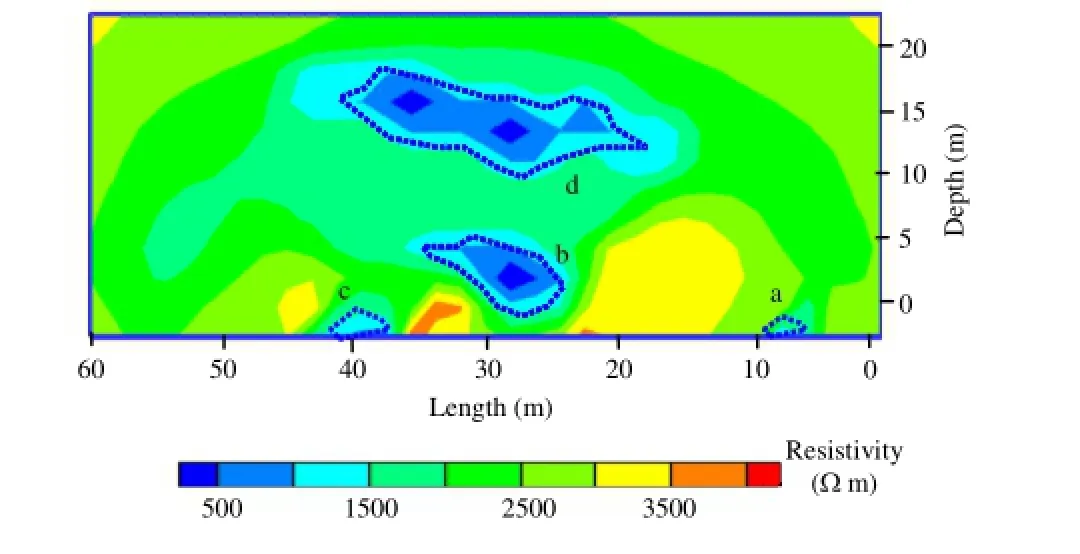
Fig.13.Inversion result of water-bearing structure in a roadway.
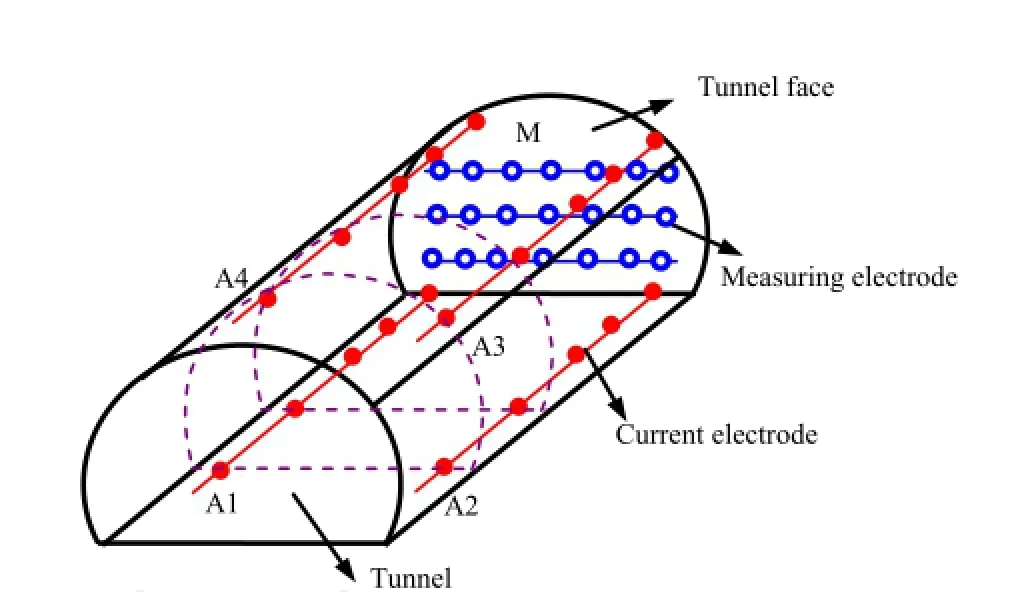
Fig.14.Schematic diagram of advanced prediction in multi-electrode array induced polarization.
3.3.Real-time monitoring of water-bearing structure based on time-lapse resistivity method in roadways
3.3.1.Time-lapse resistivity inversion method
The time-lapse resistivity inversion method is used in attempt to link inversions of different time-steps.First,a background resistivity data set is collected,thus a background resistivity model of the project site can be established as a reference model.Then, the monitoring survey is repeated during the period of monitoring.This method can interpret not only the monitoring data set,but also the difference between the monitoring and base data sets.It is highly sensitive to small subsurface changes and the coherent false anomalies can be eliminated in the difference images.

Fig.15.3D inversion result of induced polarization.Resistivity is inΩm.
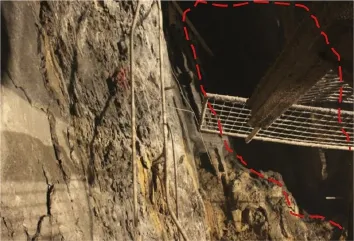
Fig.16.Excavation photo.
3.3.2.Numerical modeling
Initiation of fractures,activation of faults,and formation of groundwater inrush pathwayare themain activities inwaterinrush process.In order to obtain the early warning information timely and exactly,it is important to understand the resistivity response characteristics and recognize the image feature of conductivity changes.In this test,time-lapse resistivity inversion method is applied to monitoring the formation process of water inrush pathway in coal seam foor.Four numerical models are established, as shown in Fig.17a-d,each representing one period of formation process of water inrush pathway.In this case,the electrodes are installed at fxed locations to facilitate image comparison.As for DC resistivity real-time monitoring in feld test,the interference data of part electrodes can be removed by sleek flter,because water infow in the tunnel face may interfere some electrodes.The timelapse resistivity inversion images are shown in Fig.18a-d.It is easily observed from the monitoring results that the migration of blueregions(conductivitychanges)isconsistentwiththeformation of water-conducting crack in the original models.This numerical result indicates that the formation of water inrush pathway can be monitored simultaneously using time-lapse inversion method and the early warning signals can be captured timely.
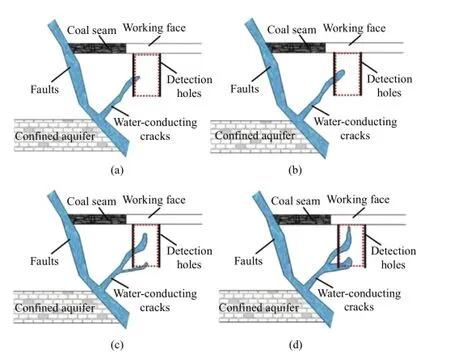
Fig.17.Models of four evolution periods of formation of water inrush pathway.
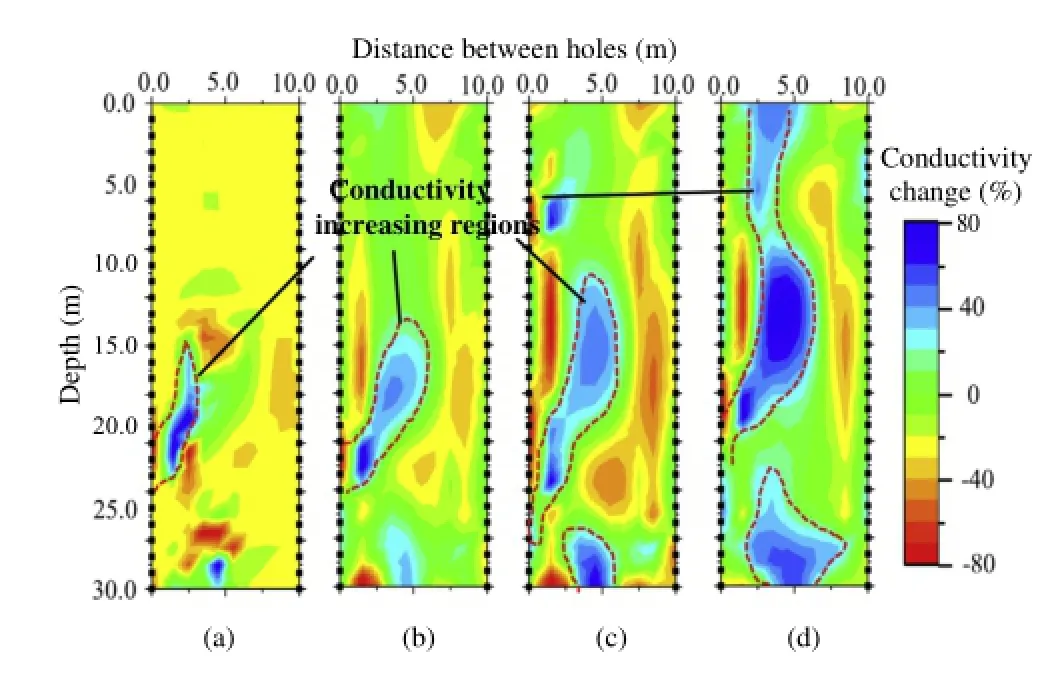
Fig.18.Time-lapse resistivity inversion images.
3.4.Resistivity CT method for advanced detection on the ground
3.4.1.Principle and numerical examples of cross-hole resistivity CT
The cross-hole resistivity CT is a high-resolution detection method,but the detection results are occasionally incorrect.For this problem,a combined detection mode and a fast parallel algorithm for partial derivative matrix are proposed.The advantages of various routine detection modes(such as pole-pole,pole-dipole, dipole-dipole,and bipole-bipole)are integrated in the combined mode,which is good for improving the recognition ability of abnormal geological bodies.The partial derivative matrix is analytically transformed and solved by the fast parallel algorithm, which is helpful to reduce the multiple solutions of inversion and improve the imaging results.Two numerical models containing several water-flled caves and several boulders respectively are established,as shown in left of Fig.19.The proposed combined detection mode and fast parallel algorithm are used to acquire the resistivity data,and the inversed imaging results are illustrated in right of Fig.19.
As can be seen from the inversion imaging results,the inversion effect of cross-hole resistivity CT detection method is good for water-flled caves and boulders,and it agrees with the original model in terms of position,scale,shape,resistivity value,etc.This method also has fewer false anomalies and better effect of boundary identifcation.Thus it can be concluded that the crosshole resistivity CT method has a better imaging accuracy within the range of reasonable hole spacing and the electrode spacing, suggesting an effective method to detect water-flled caves and other anomalies.
3.4.2.Field application
The cross-hole resistivity CT method is used to detect adverse geological bodies around the tunnels of Dalian subway constructed in karst region.The holes are drilled through the tunnels from the ground and the electrodes are installed into the holes.One of the inversion images is shown in Fig.20.It is evident that a mediumsized blue area(which is inferred to be a water-flled cave)is just located above the designed subway tunnel.This result is helpful for further geological interpretation.
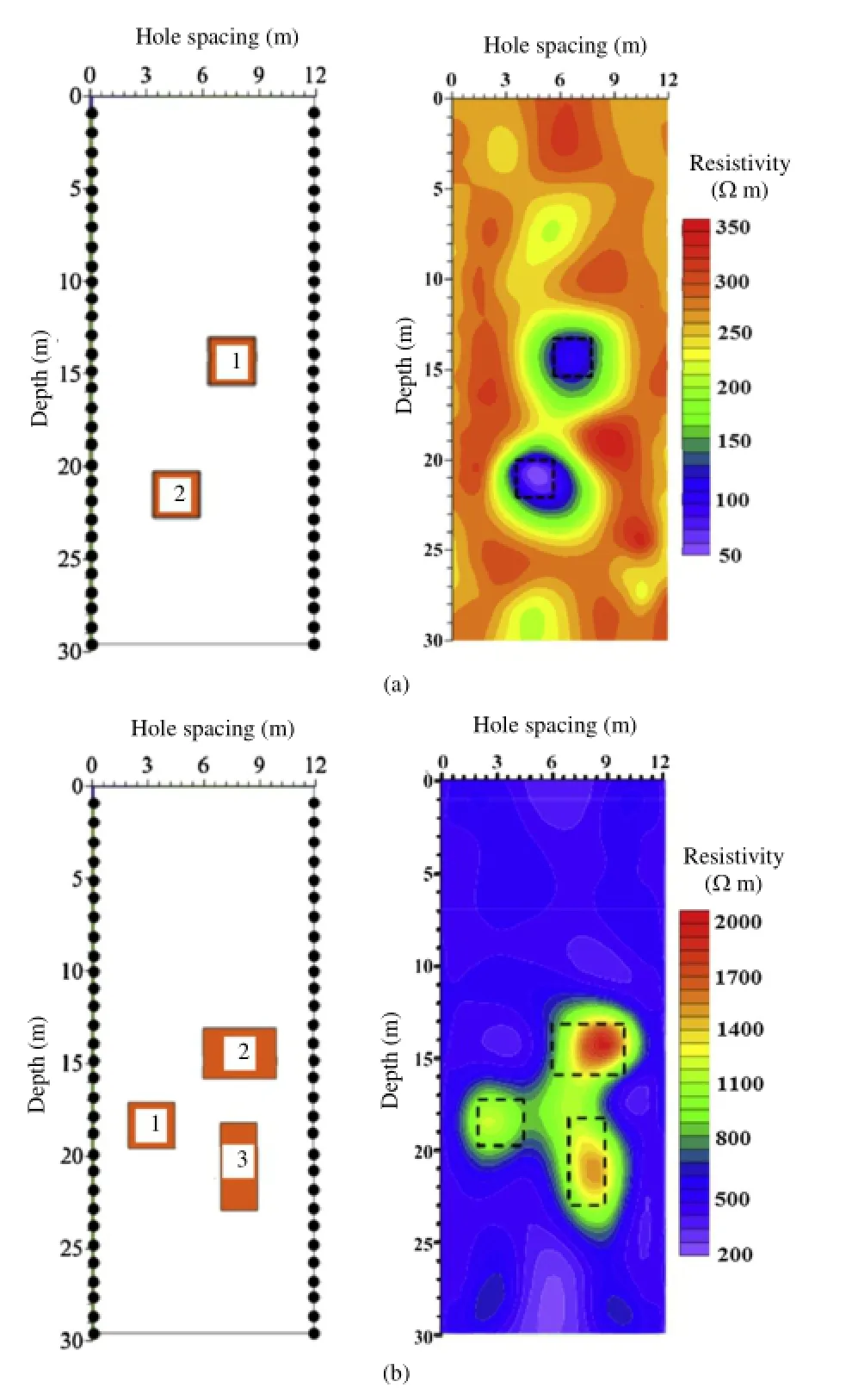
Fig.19.(a)Water-flled caves model and inversion result.(b)Boulders model and inversion result.
4.Conclusions
The DC resistivity method is an important geophysical detection method in tunnels and coal mines.Some progress has been made in routine detection,advanced detection,and real-time monitoring,which facilitates the development of DC resistivity method.The observation mode,non-uniqueness of inversion,and real-time monitoring need further studies.

Fig.20.An inversion image obtained from cross-hole resistivity CT detection.
To address above-mentioned problems,a priori information constrained inversion,3D induced polarization method with multielectrode array,real-time monitoring in time-lapse inversion and cross-hole resistivity method are introduced into tunnels and mines,which provide a feasible way for detection and real-time monitoring.
Based on the existing problems in various detection methods, the following research trends of DC resistivity method are discussed:
(1)Due to the extremely complex geological conditions,there is few advanced detection methods for TBM tunnels till now. Thus,available advanced detection technology and instrument based on focused resistivity method are the key in future study.
(2)Since detailed detection is desirable in underground engineering,3D cross-hole resistivity method with high resolution may be a feasible means to provide early warning information of water inrush.
(3)For early warning of geo-hazards in time and space,fourdimensional(4D)monitoring method associated with 4D inversion theory is another key in future research.
(4)Estimation of water volume in water-bearing structure is critically important in controlling water inrush hazards.How to estimate the water volume is an important issue.
(5)Various interferences induced by complex electromagnetic environments should be focused on in order to improve the detection effect,which needs to be addressed immediately.
Confict of interest
The authors wish to confrm that there are no known conficts of interest associated with this publication and there has been no signifcant fnancial support for this work that could have infuenced its outcome.
Acknowledgments
This work is supported by the National Program on Key Basic Research Project of China(973 Program)(Nos.2013CB036002 and 2014CB046901),the National Key Technology R&D Program of the Ministry of Science and Technology of China(No.2013BAK06B01), and the National Natural Science Foundation of China(No. 51139004).
Abedi M,Torabi SA,Norouzi GH,Hamzeh M.ELECTRE III:a knowledge-driven method for integration of geophysical data with geological and geochemical data in mineral prospectivity mapping.Journal of Applied Geophysics 2012;87: 9-18.
Bouchedda A,Chouteau M,Binley A,Giroux B.2-D joint structural inversion of cross-hole electrical resistance and ground penetrating radar data.Journal of Applied Geophysics 2012;78:52-67.
Cheng JL,Wang YH,Yu SJ,Li DY.The principle and application of advance surveying in roadway excavation by resistivity method.Coal Geology&Exploration 2000;28(4):60-2(in Chinese).
Doetsch J,Linde N,Pessognelli M,Green AG,Günther T.Constraining 3-D electrical resistance tomography with GPR refection data for improved aquifer characterization.Journal of Applied Geophysics 2012;78:68-76.
Eso RA,Oldenburg DW.Application of 3D electrical resistivity imaging in an underground potash mine.In:Proceedings of the SEG Annual Meeting,New Orleans;2006.p.629-32.
Gao ZZ.The application of the geological advance prediction system“BEAM”for the TBM construction of the Jinping diversion tunnel.Railway Construction Technology 2009;1(2):65-7(in Chinese).
Han DP,Shi YD.The numerical simulation of the electrical penetration methods at coal mining working face in roof or foor and in coal seam.Journal of China Coal Society 2000;25(Supp.):30-3(in Chinese).
Huang JG,Ruan BY,Wang JL.The fast inversion for advanced detection using DC resistivity in tunnel.Chinese Journal of Geophysics 2007;50(2):619-24(in Chinese).
Huang JG,Wang JL,Ruan BY.A study on advanced detection using DC resistivity method in tunnel.Chinese Journal of Geophysics 2006;49(5):1529-38(in Chinese).
Jegen MD,Hobbs RW,Tarits P,Chave A.Joint inversion of marine magnetotelluric and gravity data incorporating seismic constraints:preliminary results of subbasalt imaging off the Faroe Shelf.Earth and Planetary Science Letters 2009;282(1-4):47-55.
Kaus A,Boening W.BEAM-geoelectrical ahead monitoring for TBM-drives.Geomechanics and Tunneling 2008;1(5):442-9.
LaBrecque DJ,Yang X.Difference inversion of ERT data:a fast inversion method for 3-D in situ monitoring.Journal of Environmental and Engineering Geophysics 2001;6(2):83-9.
Li D,Han DP,Shi YD,Shi XF.A DC electrical penetration method for prospecting the coal face alone the same coal layer.Journal of China Coal Society 2010;35(8): 1336-40(in Chinese).
Li SC,Li SC,Zhang QS,Xue YG,Ding WT,Zhong SH,He FL,Lin YS.Forecast of karstfractured groundwater and defective geological conditions.Chinese Journal of Rock Mechanics and Engineering 2007;26(2):217-25(in Chinese).
Li SC,Liu B,Li SC,Zhang QS,Nie LC,Li LP,Xu ZH,Zhong SH.Study of advanced detection for tunnel water-bearing geological structures with induced polarization method.Chinese Journal of Rock Mechanics and Engineering 2011;30(7): 1297-309(in Chinese).
Li SC,Liu B,Sun HF,Nie LC,Zhong SH,Su MX,Li X,Xu ZH.State of art and trends of advanced geological prediction in tunnel construction.Chinese Journal of Rock Mechanics and Engineering 2014;33(6):1090-113(in Chinese).
Li SC,Xue YG,Zhang QS,Li SC,Li LP,Sun KG,Ge YH,Su MX,Zhong SH,Li X.Key technology study on comprehensive prediction and early-warning of geological hazards during tunnel construction in high-risk karst areas.Chinese Journal of Rock Mechanics and Engineering 2008;27(7):1297-307(in Chinese).
Li XJ.Study and experiment on heading detecting by fxed electric source gradient method in underground mine.Coal Geology and Exploration 1992;20(4):59-62 (in Chinese).
Li YB.Mine electric method pilot detection technology.Coal Science and Technique 2002;30(2):1-3(in Chinese).
Liu B,Li SC,Li SC,Li LP.Application of electrical resistivity tomography monitoring system to mine water inrush model test.Chinese Journal of Rock Mechanics and Engineering 2010;29(2):297-307(in Chinese).
Liu B,Li SC,Nie LC,Wang J,Li LP,Liu ZY,Song J.Research on simulation of mine water inrush real-time monitoring of using electrical resistivity constrained inversion imaging method.Journal of China Coal Society 2012a;37(10):1722-32 (in Chinese).
Liu B,Nie LC,Li SC,Li LP,Song J,Liu ZY.Numerical forward and model tests of water inrush real-time monitoring in tunnels based on electrical resistivity tomography method.Chinese Journal of Geotechnical Engineering 2012b;34(11): 2026-35(in Chinese).
Liu B,Li SC,Nie LC,Wang J,Song J,Liu ZY.Advanced detection of water-bearing geological structures in tunnels using 3D DC resistivity inversion tomography method.Chinese Journal of Geotechnical Engineering 2012c;34(10):1866-76 (in Chinese).
Liu QW.Underground electrical lead survey method and its application.Coal Geology and Exploration 2001;29(5):60-2(in Chinese).
Liu B,Li SC,Li SC,Zhong SH.Study of advanced detection of water-bearing geological structures with DC resistivity method.Rock and Soil Mechanics 2009a;30(10):3093-101(in Chinese).
Liu SC,Liu XM,Jiang ZH,Xing T,Chen MZ.Research on electrical prediction forevaluatingwaterconductingfracturezonesincoalseamfoor. Chinese Journal of Rock Mechanics and Engineering 2009b;28(2):348-56(in Chinese).
Liu SD,Wang B,Zhou GQ,Yang SL,Chen MJ.Experimental research on mine foor water hazard early warning based on response of geoelectric feld in groundwaterseepage.ChineseJournalofRockMechanicsandEngineering 2009c;28(2):267-72(in Chinese).
Liu SD,Wu RX,Zhang PS,Cao Y.Three-dimensional parallel electric surveying and its applications in water disaster exploration in coalmines.Journal of China Coal Society 2009d;34(7):927-32(in Chinese).
Loke MH.Constrained time-lapse resistivity imaging inversion.In:Proceedings of the Symposium on the Application of Geophysics to Engineering and Environmental Problems,SAGEEP.Denver,CO,USA:Environmental and Engineering Geophysical Society;2001.
Maillol JM,Seguin MK,Gupta OP,Akhauri HM,Sen N.Electrical resistivity tomography survey for delineating uncharted mine galleries in West Bengal,India. Geophysical Prospecting 1999;47(2):103-16.
Martínez-López J,Rey J,Dueñas J,Hidalgo C,Benavente J.Electrical tomography applied to the detection of subsurface cavities.Journal of Cave and Karst Studies 2013;75(1):28-37.
Martínez-Pagán P,Gómez-Ortiz D,Martín-Crespo T,Manteca JI,Rosique M.The electrical resistivity tomography method in the detection of shallow mining cavities:a case study on the Victoria Cave,Cartagena(SE Spain).Engineering Geology 2013;156:1-10.
Miller CR,Routh P,Brosten T,McNamara J.Application of time-lapse ERT imaging to watershed characterization.Geophysics 2008;73(3):7-17.
Mooney MA,Karaoulis M,Revil A.Investigation of geoelectric-while-tunneling methods through numerical modeling.In:Proceedings of the World Tunneling Congress 2013.Underground-the Way to the Future.Geneva,Switzerland: CRC Press;2013.p.1-8.
Nie LC,Li SC,Liu B,Li SC,Zhong SH,Song J,Liu ZY.An advanced detection study of frequency domain induced polarization method for water-bearing structure of tunnel.Rock and Soil Mechanics 2012b;33(4):1151-60(in Chinese).
Nie LC,Li SC,Liu B,Li SC,Zhong SH.Fast inversion for advanced detection using induced polarization in tunnel.Chinese Journal of Geotechnical Engineering 2012a;34(2):222-9(in Chinese).
Oldenborger GA,Knoll MD,Routh PS,LaBrecque DJ.Time-lapse ERT monitoring of aninjection/withdrawalexperimentinashallowunconfnedaquifer. Geophysics 2007;72(4):177-87.
Qian QH.Challenges faced by underground projects construction safety and countermeasures.ChineseJournalofRockMechanicsandEngineering 2012;31(10):1945-56(in Chinese).
Qiang JK,Ruan BY,Zhou JJ,Wang HQ.The feasibility of advanced detection using three-electrodemethodincoal-minetunnel.ProgressinGeophysics 2011;26(1):320-6(in Chinese).
Qiang JK,Ruan BY,Zhou JJ.Research on the array of electrode of advanced focus detection with 3D DC resistivity in tunnel.Chinese Journal of Geophysics 2010;53(3):695-9(in Chinese).
Ruan BY,Deng XK,Liu HF,Zhou L,Zhang L.Infuential factors and optimum survey method of advanced focus detection with DC resistivity in tunnel.Progress in Geophysics 2010;25(4):1380-6(in Chinese).
Ruan BY,Deng XK,Liu HF,Zhou L,Zhang L.Research on a new method of advanced focus detection with DC resistivity in tunnel.Chinese Journal of Geophysics 2009;52(1):289-96(in Chinese).
Spitzer K,Chouteau M.A DC resistivity and IP borehole survey at the Casa Berardi gold mine in northwestern Quebec.Geophysics 2003;68(2):453-63.
van Schoor M.The application of in-mine electrical resistance tomography(ERT) for mapping potholes and other disruptive features ahead of mining.The Journal of the South African Institute of Mining and Metallurgy 2005;105: 447-52.
Wu RX,Liu SD,Zhang PS,Xiao YL.Detection of limestone water-conducting channels in coal mine by parallel 3D electric method of surface boreholes. Chinese Journal of Rock Mechanics and Engineering 2010;29(2):3585-9(in Chinese).
Wu RX,Zhang PS,Liu SD.Exploration of two-gateway network parallel electrical technology for exploring thin-coal area within coal face.Chinese Journal of Rock Mechanics and Engineering 2009;28(9):1834-8(in Chinese).
Zhang L,Ruan BY,Lu YZ,Yang TW,Chen WY,Li JH.Study of full-space numerical modeling of advanced exploration in tunnel with DC focus resistivity method. Chinese Journal of Geophysics 2011;4:1130-9(in Chinese).
Zhang PS,Liu SD,Cao Y.A study on stereo electric method advance prediction technology in tunnel excavation.Coal Geology of China 2009;21(2):50-3(in Chinese).
Zhu J,Li TB,Li YL,Zhou DC,Lan FA,Jiang HT,Qian L.Application of an electrical method“BEAM”for advanced geological exploration to tunneling in Tongluo mountains for Dian-Lin highway.Journal of Engineering Geology 2007;15(2): 258-62(in Chinese).

Shucai Liobtained Ph.D.from the Institute of Rock and Soil Mechanics(IRSM),Chinese Academy of Sciences(CAS), Wuhan in 1996.He is professor of Geotechnical Engineering at Shandong University in Jinan where he has been the dean of School of Civil Engineering and the director of Geotechnical and Structural Engineering Research Center. He is a well-known international expert in the feld of rock mechanics.His research interests cover the stability of surrounding rock masses in underground projects,the reinforcement effect of rock bolts,the disaster prevention and applied geophysics in underground engineering.He was elected as the president of Underground Engineering Association(UEA),Chinese Society for Rock Mechanics and Engineering(CSRME).He has authored or coauthored more than 100 academic journal and conference papers and 2 monographs. In recent years,he has received many national awards,such as the Talent Support Project in New Century by the Ministry of Education of China in 2004,the National Science Fund for Distinguished Young Scholars of China in 2006,and the 9th China Youth Science and Technology Award in 2006.
*Corresponding author.Tel.:+86 531 88399179.
E-mail address:lishucai@sdu.edu.cn(S.Li).
Peer review under responsibility of Institute of Rock and Soil Mechanics,Chinese Academy of Sciences.
1674-7755©2015 Institute of Rock and Soil Mechanics,Chinese Academy of Sciences.Production and hosting by Elsevier B.V.All rights reserved.
http://dx.doi.org/10.1016/j.jrmge.2015.06.004
 Journal of Rock Mechanics and Geotechnical Engineering2015年4期
Journal of Rock Mechanics and Geotechnical Engineering2015年4期
- Journal of Rock Mechanics and Geotechnical Engineering的其它文章
- Book review
- Editorial
- Effects of sample dimensions and shapes on measuring soil-water characteristic curves using pressure plate
- Brillouin optical time-domain analysis for geotechnical monitoring
- The use of point load test for Dubai weak calcareous sandstones
- Surface wave propagation effects on buried segmented pipelines
